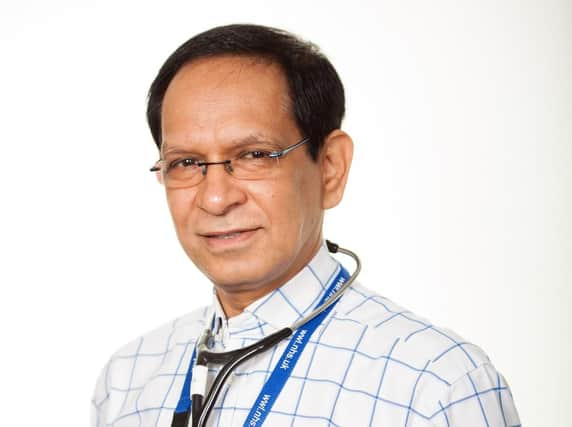Wigan doctor defends hospital deaths


The NHS Digital data ranks Wrightington, Wigan And Leigh NHS Foundation Trust (WWL) the fifth worst in the country for the number of “extra fatalities” in 2017.
Other news: Litterbug motorists could face fines up to £120It was one of 13 English trusts to experience a higher-than-expected number of deaths, according to the summary hospital-level mortality indicator (SHMI)
Advertisement
Hide AdAdvertisement
Hide AdEight of these trusts also suffered more deaths than expected in 2016: including WWL, which was placed second worst in the country that year.
But the trust’s medical director Dr Sanjay Arya said it had come off worse in the tables because it had recorded information differently from many of its opposite numbers and says there is also evidence that local residents seek treatment later than most, so heightening risks from conditions.
He said an investigation into the number of deaths found the trust was not counting patients who attended the ambulatory assessment unit as being admitted, whereas other trusts did, so skewing WWL’s performance.
The consultant cardiologist said: “A lot of it, we realised, was in the way we captured data as opposed to the rest of the country. We were not comparing apple for apple or pear for pear, we were comparing apples and pears.
Advertisement
Hide AdAdvertisement
Hide Ad“We looked into our data. Then what we did was look at Dr Foster’s data on a monthly basis and found out where there are more patients dying than expected. We started to look deep into it with consultants, doctors and nurses and tried to identify if there was anywhere our care was sub-optimal.
“In the vast majority of cases we didn’t find any problems with the care we were providing.”
Dr Arya also believes patients in Wigan seek medical help for their ailments later, which could affect the outcome in the long run.
He urged people with any health issues to seek medical care as soon as possible from the appropriate source, such as a pharmacist or GP, rather than wait until their condition becomes more serious.
Advertisement
Hide AdAdvertisement
Hide AdHe said: “What we realised was the patients that come to us are very elderly, very frail and they seek help very late.
“By the time they come to us, they are very ill and therefore they are at more risk of dying.
“It’s also very well known that in Wigan we diagnose cancer very late because patients do present very late, although the access to cancer care is the best in Greater Manchester.”
The data shows WWL was expected to have 1,624 deaths between January and December 2017, but it actually recorded 1,905 deaths - a difference of 281.
Advertisement
Hide AdAdvertisement
Hide AdIn 2016, 1,539 deaths were expected and 1,810 were observed, which was an additional 271.
Despite the rising number of deaths, its SHMI value did improve from 1.1756 in 2016 - when it was the second worst in the country - to 1.1729 in 2017.
NHS England says the SHMI is the ratio between the number of patients who die following hospitalisation at the trust and the number that would be expected to die on the basis of average England figures, given the characteristics of the patients treated there.
The latest data published by NHS Digital covers 2017, but Dr Arya says the SHMI has been improving during 2018 and fewer people have died after being admitted to WWL’s hospitals.
Advertisement
Hide AdAdvertisement
Hide AdHe said: “Even though the population is ageing, even though they are developing more co-morbidities, fewer or the same number of people have died than last year.
“I am seeing people who are much older and frailer, but the number of people dying is less.”
A mortality group has been set up to examine deaths in the borough and it meets every three months.
One area being looked at is the number of people dying at home after being discharged.
Advertisement
Hide AdAdvertisement
Hide AdThe SHMI includes both deaths which occurred in hospital and deaths outside hospital within 30 days of discharge.
Dr Arya said: “We are looking at why patients go into the community and die. We have done two audits. We are looking at what it is in the community.
“We haven’t found anything glaring at this point in time, but we are still diving into this data.”
Nationally, 134 trusts were included in the SHMI for 2017, with 103 having deaths within the expected range.
Back in 2015, the number of deaths of patients who spent time at WWL was marked “as expected”.